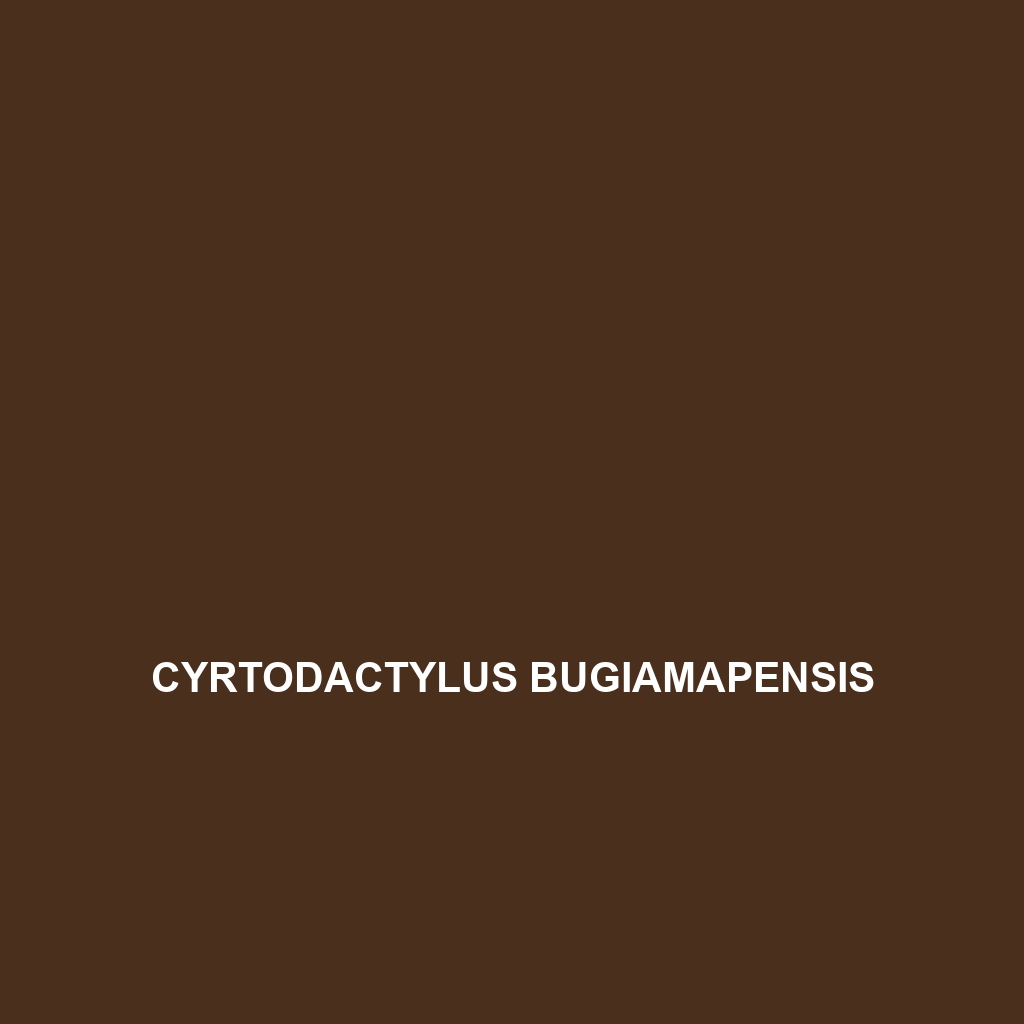Cyrtodactylus bugiamapensis: A Detailed Species Description
Common Name: Cyrtodactylus bugiamapensis
Scientific Name: Cyrtodactylus bugiamapensis
Habitat
Cyrtodactylus bugiamapensis is primarily found in the lush tropical forests of Southeast Asia, more specifically within the limestone karsts of Vietnam. This gecko species thrives in limestone habitats, often residing in rocky crevices and forest edges, where the microhabitat provides sufficient cover and humidity.
Physical Characteristics
Cyrtodactylus bugiamapensis is a moderately-sized gecko, typically reaching lengths of up to 15 centimeters. Its distinctive features include a slender body with elongated limbs, a flattened head, and a long tail. The coloration varies from brown to gray with intricate mottling, aiding in camouflage against its rocky environment. Notably, it has large, prominent eyes, which enhance its nocturnal vision, and toe pads that are equipped with small lamellae, enabling it to climb efficiently.
Behavior
This species exhibits primarily nocturnal behavior, foraging at night in search of food. Cyrtodactylus bugiamapensis is known for its ability to climb and blend seamlessly into its surroundings, using both its agility and cryptic coloration to evade predators. Territorial displays between males are common during mating season, often involving head bobbing and lateral compression.
Diet
Cyrtodactylus bugiamapensis has an insectivorous diet, predominantly feeding on small insects such as crickets, beetles, and moths. Its feeding habits are opportunistic, often hunting by stalking or ambushing its prey at night, and it plays a significant role in controlling insect populations within its habitat.
Reproduction
Breeding in Cyrtodactylus bugiamapensis typically occurs during the wet season, when humidity and temperature conditions are favorable. Females are known to lay clutches of 1-2 eggs in hidden locations, such as under rocks or leaf litter. The eggs incubate for approximately 60 days before hatching, with the young geckos being independent from birth, ready to forage and fend for themselves immediately.
Conservation Status
Currently, Cyrtodactylus bugiamapensis is classified as vulnerable on the IUCN Red List due to habitat loss mainly caused by deforestation and land conversion for agriculture. Conservation efforts are crucial to protect this species and its unique limestone habitat.
Interesting Facts
One of the most fascinating aspects of Cyrtodactylus bugiamapensis is its ability to change its color slightly depending on its surroundings, a feature that enhances its camouflage. Additionally, this species is often overlooked in biodiversity research, highlighting the importance of continued exploration in its native habitat.
Role in Ecosystem
Cyrtodactylus bugiamapensis plays a vital role in its ecosystem by contributing to the balance of insect populations, therefore supporting the larger food web. As both predator and prey, it interacts with various species, including birds and mammals, highlighting its importance in maintaining ecological stability within its limestone forest habitat.
